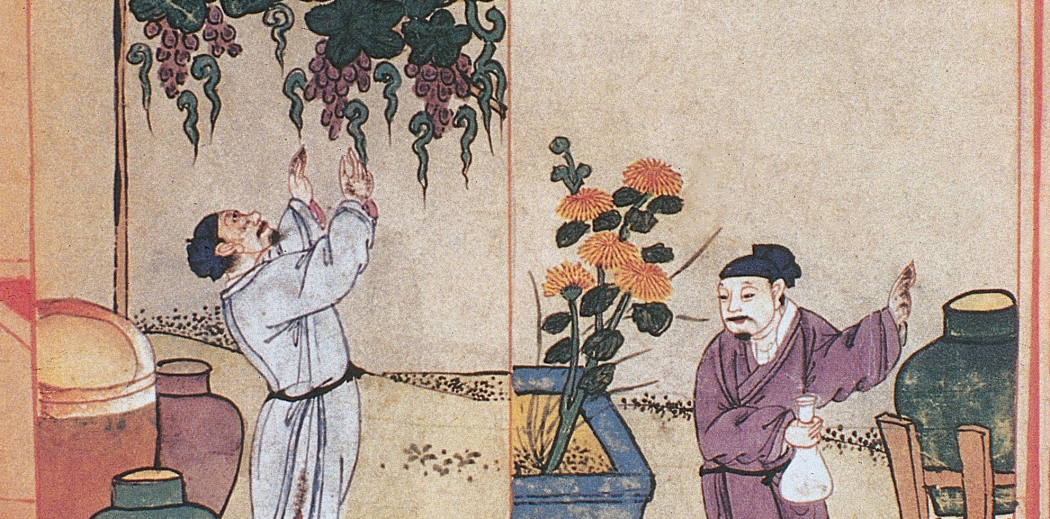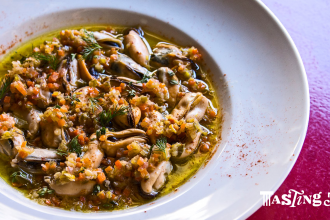China and wine aren’t necessarily synonymous. The country is better known for Baijiu, a grain-based distilled spirit that’ll put hair on your chest, but in the past few decades, China’s started to emerge as a wine force to be reckoned with. Now the world’s sixth largest wine producer, it’s working to make a name for itself and a reputation as your go-to wine region.
Raise a Glass to China’s Wine History
Along with its contemporary accolades, China can claim the title of being the spot of the first drink in history. In 7000 BCE, the earliest grape-based alcoholic drink, which also happened to be the earliest alcoholic drink ever consumed, was discovered in the Henan province. But despite its early presence, around 130 BCE, wine was dethroned by booze from other sources, including sorghum, rice, and lychee (an early ancestor of the lychee martini, perhaps?).
As grape wine was only produced in a few regions, particularly Gansu in the northwest, it wasn’t widely available or known by many people. The industry officially began in 1892 with the emergence of the first modern winery in Shandong, a coastal providence that is still one of the largest wine-growing regions. About 100 years later, in 1979, legendary winemaker Rémy Martin saw the potential of the terroir and invested in Tianjin, leading to the birth of Dynasty Wines, one of the “Big Three of Chinese wine.” Such would start a relationship with foreign producers that would shape China’s wine landscape.
A World Wine Leader on the Rise
And then came 1980. China, undergoing economic reform, saw a surge in development, both economic and of a middle class. And what is the perfect status symbol for new money? Wine. The answer is wine, and the Chinese consumers were distinctly aware that nothing pairs better with luxury cars or haute couture than the finest Bordeaux and Burgundy.
In the years since, China’s pursuit of wine domination has been met with rapid success. It now boasts more than 3,000 square miles of land dedicated to vineyards — that’s the second largest wine area in the world, trumping vino kingpins like France, Italy, the United States, and Australia, and only falling behind Spain. But China hasn’t settled for coming in second: in 2013, consumers outranked France as the biggest market for red wine, knocking back 1.86 billion bottles in one year.
Right now, there’s still a divide between the wine that’s being produced and the wine that’s being drunk. Chinese wine lingers towards the lower end of the market, although prize-winning bottles are slowly gaining a presence. After all, nurturing vines into something noteworthy takes time, and China’s are still young, though ripe with potential.
French imports remain some of the most popular: Chateau Lafite Rothschild was so coveted that Lafite set up shop in a vineyard on the Shandong peninsula. Along with Shandong, Beijing, Yantai, Zhangjiakou, Yibin, Tonghua, Taiyuan, and Ningxia (where LVMH Moet Hennessy recently bought 163 acres to supplement their 74 acres in Yunnan) are distinguished growing regions in the country. Cabernets are popular, while in a blind taste test, wines from Ningxia fared better than French Bordeaux.
These high-end wines are usually the efforts of boutique producers, meaning the quantity is low, the price high, and the labels lacking in recognition, a combination that often excludes foreign buyers. So don’t be surprised if you fail to find a Chinese bottle in your local wine shop or restaurants — it’s nearly impossible to find any in the United States.
The story of China’s wine industry is one constantly evolving. Experts predict the next few years will see a rise in upmarket Chinese wine, and a shift as Chinese consumers start to reach for domestic products. Given the industry’s rapid rise in just the past few years, it may not be long before you’re reaching for a bottle from Shandong instead of Napa.
Cover Image Courtesy of: Wellcome Library, London








